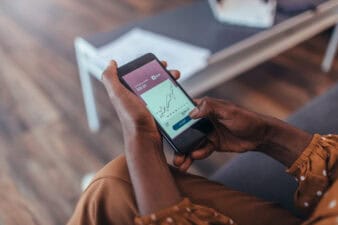When I first saw the year-to-date statistics from the Investment Funds Institute of Canada (IFIC) for mutual fund sales in this country in the first half of 2017, I almost fell off my chair.
Net sales of mutual funds year to date through the end of June were $31.1 billion — $16.6 billion, or 88%, higher than in the same period a year ago. Over the 12 months through the end of June, the growth wasn’t quite as substantial, up 33% to $44.6 billion.
Has no one got the memo that mutual funds charge excessive management fees?
John Heinzl wrote an excellent article in March discussing the five things your investment advisor isn’t telling you. One of the five points he made is that bank mutual funds charge MERs of around 2%, meaning if you want to get an annual return of 6% after fees, your mutual fund has to deliver 8% to meet your goal.
Oh, but hey, your mutual fund invests in all the big banks, so you’re just paying yourself, right? Not by a long shot.
What are people buying?
According to IFIC, 58% of the net sales so far in 2017 were in balanced mutual funds, those wonderfully convenient funds that invest in both equities and fixed-income investments.
A second article from Heinzl suggested three different balanced funds investors can use that aren’t expensive. However, the only one of the trio that is actively managed is from Calgary-based Mawer Investment Management.
It charges 0.94% annually for the Mawer Balanced Fund Class A (MUTF_CA:MAW104), which invests 33% in fixed income, 64% in equities, and the rest in cash. No load: it’s rated five stars by Morningstar.
While I’d like to think a significant chunk of the $18.2 billion in net sales in balanced funds year to date in 2017 went to Mawer, the reality is, the lion’s share went to the bank funds.
Why DIY investors fail
The popular finance blog “Boomer & Echo” recently discussed why do-it-yourself investors fail. Marie Engen, the Boomer in the mother and son tandem that produces the blog, suggests that most individuals simply don’t have the patience or mental willpower to stick with their plan.
This lack of staying with it ultimately leads to poor performance and then no performance as they completely withdraw from the markets — something we saw a lot after the Financial Crisis of 2008 decimated stock prices.
She’s right, and it’s a big reason why financial advisors aren’t disappearing from the investment marketplace. Most people want their hands held and to be told it’s going to be all right.
Unfortunately, whether you’ve got a good advisor or a bad one, their fees are going to hold back your performance. It’s simple math.
Fools know better
Here at the Fool, we believe that individuals don’t have to use a financial advisor to get good results. Our purpose is to help the world invest better, whether it’s through the countless articles that appear at Fool.ca each day or the fee-based services we provide to subscribers.
You can do it yourself.
Here’s how
Mawer might be one of the best active managers in Canada, but fees remain a sticking point. If you can read this article, you can find cheaper alternatives to a mutual fund.
The first option is to buy three of the largest ETFs available in Canada:
1) iShares Core S&P/TSX Capped Cmpst Indx Fnd (TSX:XIC). It gives you Canadian equities at an MER of 0.05%, or about 1/20th the Mawer Fees.
2) iShares S&P 500 Index CAD Hedged (TSX:XSP). Charging 0.11% annually, this ETF gives you exposure to 500 of the largest companies in the U.S.
3) iShares DEX Universe Bond Index Fund (TSX:XBB). This ETF gives you the 33% fixed-income allocation, matching the Mawer mutual fund for 0.09% annually.
Allocating 33% to each ETF, a $100,000 portfolio costs you $83.34, or 0.08%, in annual fees, less than one-tenth the cost of the Mawer mutual fund.
The second alternative, and likely the one a lot of Foolish readers would choose, is to buy the XBB for your fixed-income content and then buy 10 stocks from both the XIC and XSP. The XSP is simply the TSX-traded version of iShares’s U.S.-listed S&P 500 index ETF.
Given how important saving for retirement is, it seems crazy for Canadians to buy mutual funds when there are better do-it-yourself options available.








